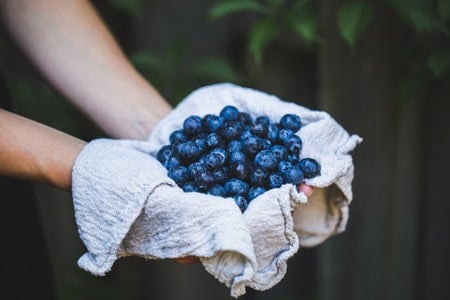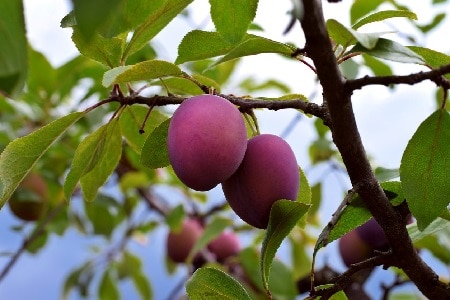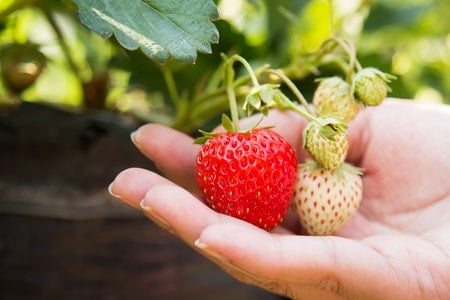There are many reasons to plant blueberries in your garden or allotment. Fondly referred to as a ‘superfood‘, blueberries offer us many benefits. From nutrition to health benefits, blueberries have a positive impact on the human body.
Here in this article, I will be discussing everything you need to know about propagating blueberry plants and how you could reap more of its benefits.
Benefits of Planting Blueberries
Blueberries are known to help in fighting off diseases. They achieve this thanks to the presence of a high concentration of flavonoids. Flavanoids have been known to limit the extreme effects of oxidation as well as inflammation. Blueberries also help reduce blood pressure, improve heart health, prevent cancer, increase bone strength and manage diabetes. It does all these while providing you with your daily dose of vitamin C.
With all these great benefits, blueberries are a great fruit and one that everyone has to consume. Rather than paying for them each time you want to have a blueberry, planting them yourself may be the best choice available. This provides you with a steady stream of blueberries that will surely last for a long time.
If you have never had a garden or are new to planting fruits, stick around and learn how to do it.
What You Need To Plant a Blueberry Seed
Most of the blueberries you see in the market and sores are produced from propagating, but a seed will have the same effect. The only major difference between seed grown blueberries and propagated blueberries is the similarities to the parent berries. With propagated blueberries, the final products are the same as the original blueberries.

In the case of seed grown blueberries, the final product is usually not the same as the original. For those seeking a little variation, then seed planting blueberries is the way to go.
To plant a blueberry seed, you will need the following items
- Blueberries (the seeds will need to be extracted)
- A food processor or blender (to help with preparing the seeds for planting)
- A freezer (will be used for stratification. Stratification is done to simulate winter conditions for the growth of the seeds.)
- Damp paper towels (will help protect the seeds)
All these materials will be used in the preparation and actual planting of the blueberry seeds and will each play key roles.
Preparing the Blueberry Seed for Planting
To improve your chances of getting a fruitful blueberry tree, the seed will need to be recently extracted from the fruit. The fruit needs to be crushed to extract the seeds. You can achieve this manually by crushing it in a bowl, or you can use a blender or food processor. Both of these options may be safer than mashing in a bowl so that you do not accidentally damage the seed.

While you are mashing it, make sure you add water to help ensure that you do not end up crushing the seeds.
After mashing the fruit, the seeds will sink to the bottom of the resulting mixture whilst the pulp and other unnecessary materials will be at the top. At this point, you should extract and dispose of the pulp and other extra liquids until only the seeds are left. Whilst doing this, add a lot of water to ensure that some seeds are not lost along with the pulp. Once the seeds have been extracted, then you will need to scarify them.
Scarification is typically done to trick the seeds into thinking that it is winter so they germinate.
It is achieved by wrapping the seeds in damp paper towels and placing them in a freezer for approximately 90 days. Blueberry seeds are naturally in a state of rest and cannot germinate without first being broken out of that rest. Freezing the seeds will help break this dormancy and the seeds will be ready for planting.
Preparing the Soil for Planting Blueberries
Acidic soil is important for the optimal growth of blueberries. Soils with pH ranging from 4.3 to 5.3 will do as long as they are rich in soil organic matter. If soil pH is greater than this range, then the sulfur content needs to be increased. Sulfur is transformed in the soil by several bacteria and it has to be inserted at about 6 – 8 inches below the soil surface.

If soil pH is lesser than this range, there will be an increase in the aluminum or manganese content. This is very toxic for blueberry plants because chlorosis will begin to occur in their leaves. A major indicator of this condition will be the yellowing of its leaves.
Also, the soil must be loose and rich in vitamins and minerals. To improve the mineral and vitamin content of the soil as well as increase its water holding capacity, add a mixture of compost and peat moss to it.
How to Plant a Blueberry
Once the 90 days of refrigeration has been completed, the seeds will no longer be dormant and can be planted immediately or stored till a later period. Once the dormancy is broken, this process does not have to be repeated as long as they are still refrigerated until you are set to plant.
Blueberries grow and thrive in a warm environment and as best, it is perfectly suited to the fall climate. Spring is another season that tends to be favorable to blueberries depending on your location.

Step 1:
The seeds should be planted in seed trays filled with sphagnum peat moss. After planting the seeds, the seeds should be covered with approximately a quarter inch (6 ml) of soil. Once this is done, the soil needs to be constantly moistened without turning it damp. Depending on different factors, the seed may not germinate for as long as three months, or it can germinate as early as six weeks.
Step 2:
Store the seed tray in an area with adequate sunlight with a temperature of about 60 – 70ᵒF (15 – 21ᵒC). Where there is no access to sunlight, fluorescent lights can be used to provide light to the seedlings. In the first year, the growth from the seedlings may not exceed 5 – 6 inches (13 – 15 cm) in length.
Step 3:
Transplant the resulting plants to pots when they have exceeded the seed tray stage. Here, they need to be stored in a warm and sunny location. Once the plants are over two weeks in the pot, you can apply fertilizer to help facilitate their growth. By this time, you can see growth as much as 1 – 2 ft. (30 – 61 cm).
Keep the plant and soil moist constantly and continue to care for them. Blueberries are perennial plants and it takes several years for them to begin producing their fruits. Patience is required as it may sometimes seem like nothing is happening. Therefore, it makes a great long term project for any gardener.






